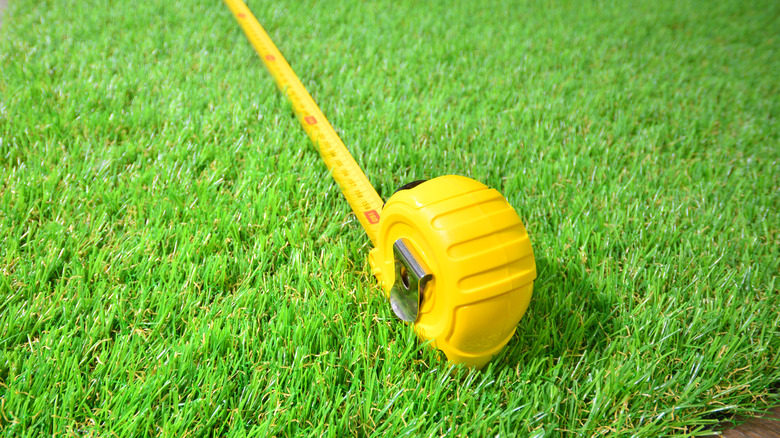Here's Why Google Earth Pro Is Your Home's Secret Weapon
You know how it is. You're driving home from work one evening and decide you will get a pet tiger, but you want to be sure your backyard is big enough for the recommended 1.24-acre enclosure. Or maybe you're simply trying to figure out how much lawn fertilizer you need to buy or how much fencing you might need. But it's tough to figure out these oddly shaped areas and long distances. Either way, Google has your solution: Google Earth Pro. TikTok user @yardfarmer.co created a stir when she revealed how she uses the tool. Like her, you reach can a good estimate of such information by simply sketching some lines on an aerial image of land you're curious about. It's almost as fun as Google Earth's other talent, letting you gawk at the lavish past homes of Will and Jada Pinkett Smith.
Don't fret if you don't think of yourself as a pro at using Earth. Few of us are. Since 2015, Earth Pro has been a free desktop version of its mobile- and web-based Google Earth products, but with a lot of added features. Earth Pro is easy to use for this sort of thing, and it has tons of advanced features that only geologists and homeowners association officers can understand. You don't need the Pro version to simply grab an image so you can get the proportions right. But for the built-in measuring tools, Pro is the way to go.
What you can do with Earth Pro
Drawing these lines all over your property and determining their length and the area within them is a matter of clicking to create points — dots that Earth Pro will connect and quantify for you. Jason Seiberlich, who's documenting his lawn's evolution on YouTube, walks you through a handful of simple steps. Beyond those basics, you can edit your lines and areas, save your shapes, change units of measure, get elevation information, and tons more. You can even import data and images to superimpose on your property, perhaps to plan your landscaping or locate potential tiger shelters. A more likely use might be to show planned additions in a form you can use when applying for a permit.
It's not the most precise process in the world. Geographic Information System (GIS) data sometimes contains errors, and creating connected points can only do a fair job of approximating curved and convoluted areas. But it's plenty accurate enough for most homeowners' uses. And if you're not into Google, you can accomplish many of the same things using county GIS maps via online software like Esri's ArcGIS and available through websites like qPublic. According to commenters on @yardfarmer.co's TikTok post, there are also some basic measuring tools in Google Maps, which you can use to find your home's property lines in some areas. You can download Earth Pro or get links to the mobile and web versions on Google's site.
